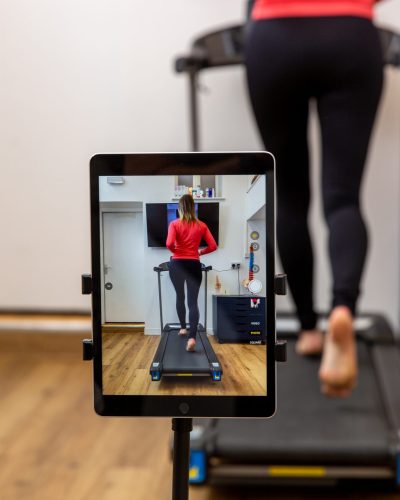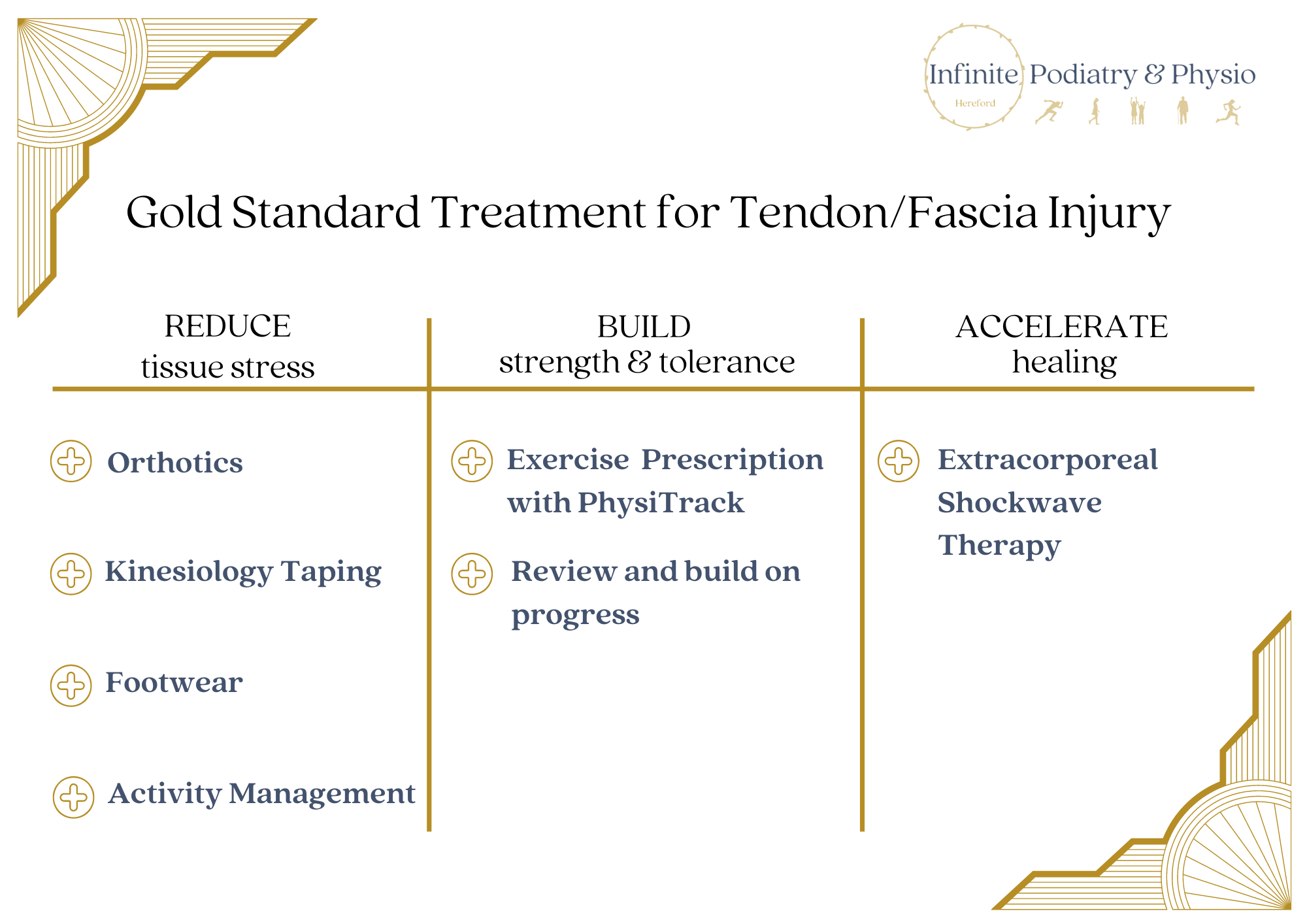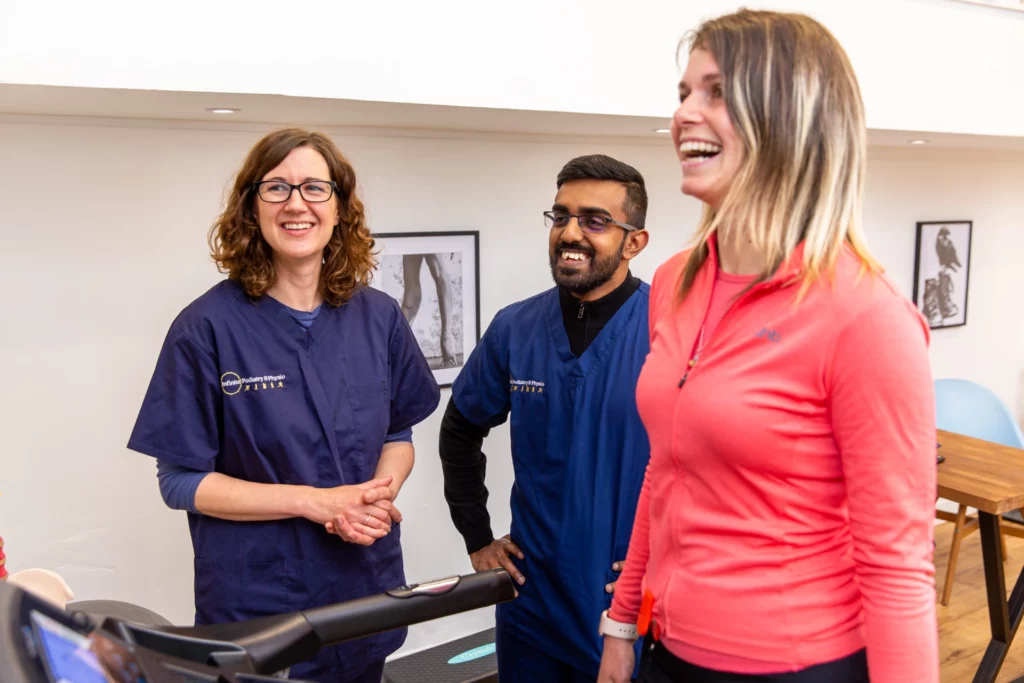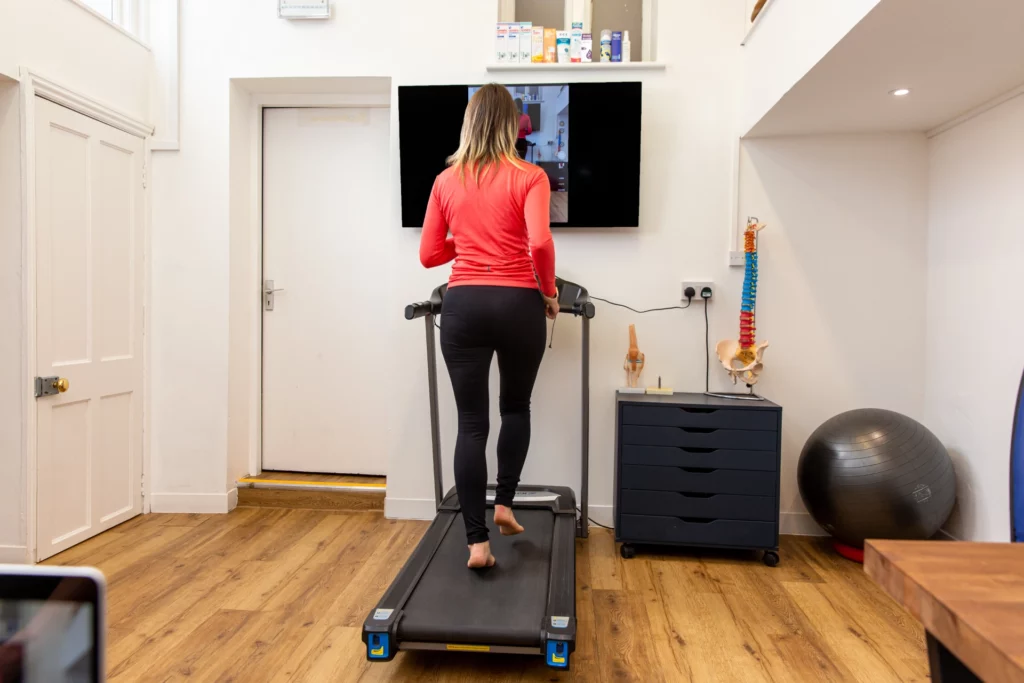
Biomechanical Diagnostic Consultation with Video Gait Analysis
Biomechanical Podiatric Medicine is the study of the bones, muscles and joints of the foot and lower limb, of how these structures interact with one another, and of how this impacts your daily movement.
Podiatrists who specialise in Biomechanics are called Musculoskeletal (MSK) Specialist Podiatrists. At Infinite, we also employ Physiotherapists specialising in foot related Musculoskeletal conditions.
Gait Analysis is the systematic study of how our body moves, particularly during walking and running, and of the impact this has on our body as a whole. Information gathered during Gait Analysis can be used to improve pain, injury, and performance.
Video gait analysis allows the MSK Podiatrist/ Physiotherapist to record and subsequently slow down your movements, which may be too fast to be seen by the naked eye, thus enabling clear and objective analysis. Video Gait Analysis enhances the quality of information gathered leading to a stronger and more reliable diagnosis and treatment plan.
By recording your gait pattern we can also clearly demonstrate to you the reason behind our diagnosis, by replaying our recordings and highlighting areas of concern. Repeating the video gait analysis post-treatment can demonstrate, to both you and your Practitioner, linear improvement and results.
Patients seeking Video Gait Analysis present with the following symptoms;
- Foot and ankle pain
- Heel pain
- Bunions
- Shin pain
- Knee pain
- Hip pain (Rare)
- Lower back pain (Rare)
- Limb length discrepancies
Video gait analysis is a diagnostic tool, which is then used to accurately diagnose the root causes of these symptoms and provide information to your clinician which will guide their treatment plan.
Runners and other sporting groups can use Video Gait Analysis to better understand their performance, including how to enhance and improve their performances and minimise the risk of injuries.
What will your appointment entail?
First your Podiatrist will take a thorough history of your complaint, seeking to understand the initial causes and the timeline of its development. They will talk to you about what improves your pain and what makes it worse. They ask you about your habits, hobbies, work, and the footwear you use.
History taking is vitally important in allowing for the correct diagnosis to be reached and we will take our time in understanding your journey.
Next your Podiatrist will conduct a thorough a physical examination, involving relevant clinical tests. The aim of this is to consider how your foot and ankle move whilst non-weightbearing, weightbearing and during dynamic movement. This will take into consideration your muscle strength and flexibility and the range of motion in your joints.
Our Video Gait Analysis suite is a large and airy space, containing a treadmill and large screen.
Your Podiatrist will watch you walking across the room and, if you are comfortable, on the treadmill.
Using a camera, we will film you walking, projecting the images onto a screen visible to you. This will allow you to view your Gait in real-time. Your Podiatrist will discuss with you the characteristics they can see in your gait, the impact these are likely to have on your complaint or sporting performance.
Following the assessment there will be time for you to review the images together, slowed down to allow small but significant issues to be identified.
Following this comprehensive assessment your Podiatrist will confirm your diagnosis and summarise the factors in your Gait and Biomechanics which contribute to it.
In some circumstances, your MSK Podiatrist may feel that they need further investigations before confirming your diagnosis or diagnoses, for example an x-ray or MRI scan, blood tests etc. If this is the case, they will support you in accessing these investigations, either through a private provider or via the NHS.
The final stage of your Biomechanics Video Gait Analysis is for your MSK Podiatrist to design your treatment plan. This will depend on your diagnosis and could include a number of treatment options.
If you have a soft tissue injury, your Podiatrist will use the following tool to guide you through the treatment options available to you.


What to wear and bring to your Video Gait Analysis
We ask that you attend wearing (or bring along if the weather is cold!) a comfortable pair of shorts.
You may wish to bring a range of your everyday and/or sporting footwear.
Any existing insoles or orthoses
Any reports of previous x-rays, scans, or imaging if you have these available, however this is not essential.


